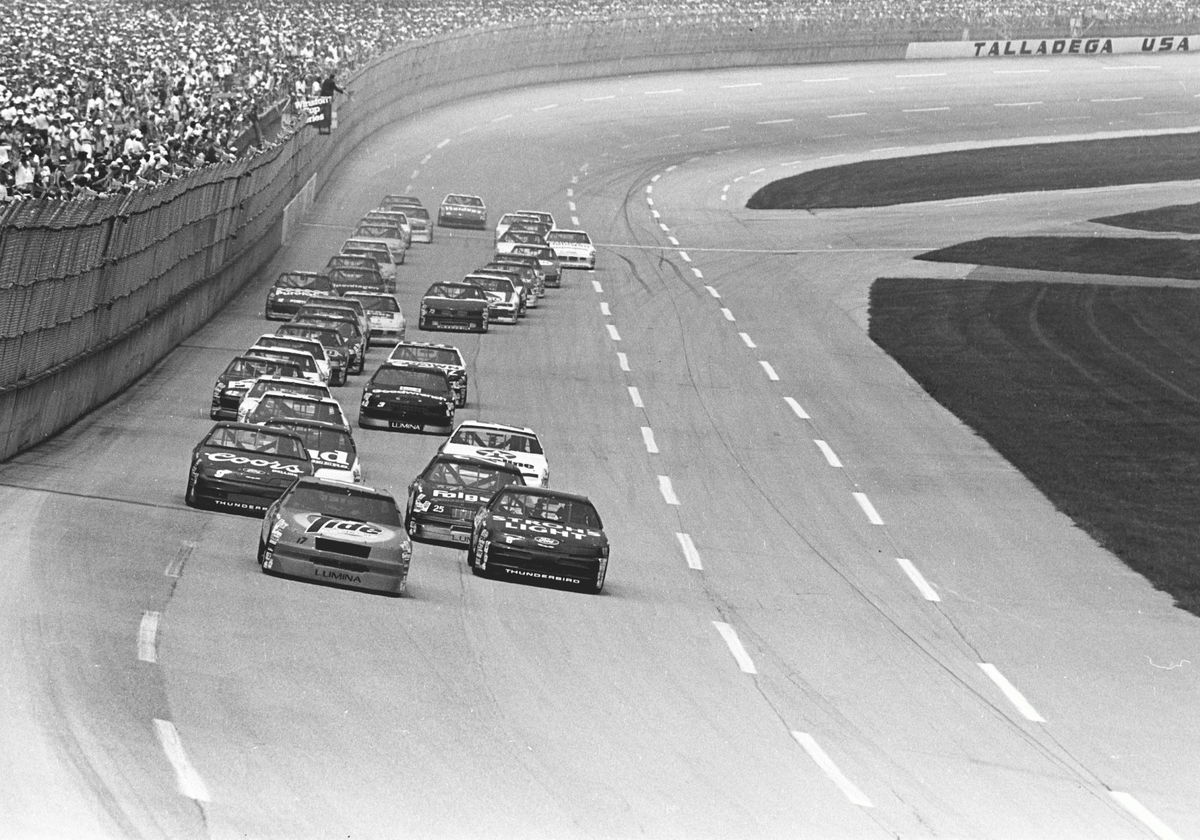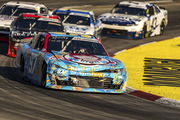

Restrictor plates—just the mention of them can ignite a heated debate in certain NASCAR circles. Some see them as essential safety measures, while others grumble about the way they shape racing dynamics. But love them or hate them, there’s no denying their impact. What’s ironic is that in a sport defined by speed, restrictor plates were introduced to slow cars down. It might sound counterintuitive, but they were brought in to save lives after NASCAR’s fastest days became too dangerous to handle.
Watch What’s Trending Now!
Recently, Joe Gibbs Racing (JGR) stepped up to address this controversial topic head-on. They released a fascinating video that dives deep into the history of restrictor plates—why they were introduced, how they’ve evolved, and the lessons learned along the way. It’s an eye-opener for anyone wondering how safety measures reshaped NASCAR, both for better and worse.
ADVERTISEMENT
From life-saving measures to tapered spacers: JGR breaks it down
JGR took fans back to 1970 when NASCAR first flirted with restrictor plates. At the time, the sport was transitioning from big-block to small-block engines. Restrictor plates were used temporarily to limit airflow into big-block engines, reducing horsepower until those engines were banned outright in 1974. That chapter closed quietly, and restrictor plates wouldn’t be mentioned again for over a decade. Then came Talladega in 1987—a race that would change NASCAR forever.
Bobby Allison’s car, traveling at an eye-watering 210 mph, went airborne and tore through the catch fence, coming dangerously close to the grandstands. Thankfully, a disaster was narrowly avoided, but the incident was a wake-up call. In response, NASCAR implemented restrictor plates at Talladega and Daytona starting in 1988. The difference was immediate: qualifying speeds dropped from 212 mph to 198 mph. But there was a side effect—these plates encouraged pack racing, where cars bunched together in tight groups. This made for thrilling finishes but also increased the risk of multi-car wrecks.
Fast-forward to 2015, and NASCAR introduced tapered spacers, a more refined version of restrictor plates, at tracks other than Daytona and Talladega. Tapered spacers limited horsepower without as much disruption to throttle response, a change drivers generally welcomed. By 2019, these spacers replaced restrictor plates entirely, even at superspeedways like Daytona.
ADVERTISEMENT

USA Today via Reuters
Feb 19, 2024; Daytona Beach, Florida, USA; NASCAR Cup Series drivers Corey LaJoie (7), Kyle Busch (8) and A.J. Allmendinger (16) race three wide for the lead during the Daytona 500 at Daytona International Speedway. Mandatory Credit: Mark J. Rebilas-USA TODAY Sports
While safety is the official reason behind these changes, not everyone is convinced restrictor plates—or even tapered spacers—are the perfect solution. Drivers, in particular, have mixed feelings about the way these devices influence racing. Denny Hamlin, a veteran driver for JGR, has been vocal about his concerns. Speaking on his podcast Actions Detrimental back in October last year, Hamlin didn’t hold back: “If I’m going to fix superspeedway racing, I’m going down 150 horsepower or whatever it might be and then taking a ton of drag out of the car.”
ADVERTISEMENT
Hamlin’s point is simple: restrictor plates and tapered spacers create too much drag, making it hard for drivers to break out of the pack and make bold moves. He argued that reducing drag and tweaking the tapered spacers would allow for more aggressive racing, with three- and four-wide moves becoming a real possibility again. “It’ll allow us to make more aggressive moves,” Hamlin said. “When we get a run, we’ll take it versus just staying in line. That was my fix.”
It’s not just Hamlin who’s weighed in.
Top Stories
Dale Jr. Warns of Deeper Issues as Joe Gibbs Parts Ways With Decade-Long Executive

Chase Elliott’s Popularity Hits New Low as Dale Jr.’s Daytona 500 Return Triggers Record-Breaking Sale

Richard Childress & Johnny Morris Make Patriotic Power Moves Days After Causing NASCAR’s Collapse in Courtroom

“Shouldn’t Keep His Job”: Dale Earnhardt’s Long-Time Sponsor Demands Steve Phelps’ Ouster After Disgracing Richard Childress

What Is NASCAR’s 5-Strike Rule That Could Change Its Future? Check All Details Here

ADVERTISEMENT
Drivers Sound off: The risks, rewards, and frustrations
Many drivers appreciate the better throttle response that tapered spacers provide compared to restrictor plates. But the drawbacks are hard to ignore. The tightly packed racing caused by these devices often leads to massive wrecks, and some argue that the artificial closeness takes away from the skill required to race at the highest level.
NASCAR’s decision to use restrictor plates in the late ’80s was undeniably a game-changer, and for good reason. Without them, speeds could have soared past 225 mph, a dangerous prospect even by today’s standards. But the introduction of pack racing brought its own set of challenges, with multi-car pileups becoming a frequent sight.
In recent years, the shift to tapered spacers has been a step forward, offering a compromise between safety and performance. Yet the debate rages on. Should NASCAR dial back horsepower even further, as Hamlin suggests? Or should they focus on other ways to improve safety without compromising the integrity of the racing?
ADVERTISEMENT
One thing is certain: restrictor plates and tapered spacers are more than just pieces of metal. They represent NASCAR’s ongoing struggle to balance speed, safety, and spectacle. And thanks to JGR’s deep dive into their history, fans now have a better understanding of how we got here—and where we might be headed next.
ADVERTISEMENT
ADVERTISEMENT
ADVERTISEMENT

